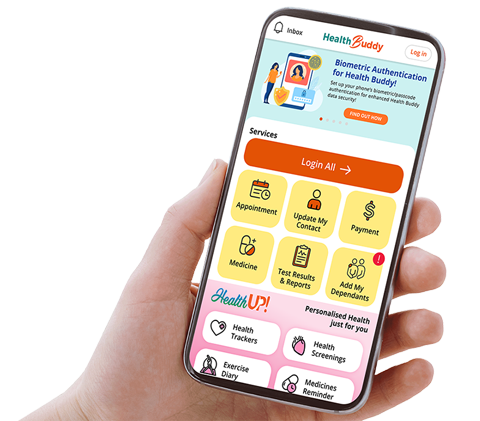Singapore National Eye Centre will NEVER ask you to transfer money over a call. If in doubt, call the 24/7 ScamShield helpline at 1799, or visit the ScamShield website at www.scamshield.gov.sg.
Refractive Surgery / SNEC Laser Vision Centre
Laser Blended Vision (LBV)
Advanced LASIK solution for Presbyopia – Introducing the Concept of ‘Laser Blended Vision’

What is Presbyopia?
Presbyopia is an age-related vision issue affecting near focus, impacting daily life and independence.
In fact, the term “presbyopia” comes from a Greek word which means “old eye.” We may start to notice presbyopia shortly after age 40. We will probably find it harder to read small print that or we need to hold objects further away to see them clearly.
What causes Presbyopia?Presbyopia occurs when the natural lens in the eye loses its elasticity and ability to change shape as a person gets older. When one is young, the lens is soft and flexible, easily changing shape. This lets us focus on objects both close-up and far away. After age 40, the lens becomes more rigid. It cannot change shape as easily. This makes it harder to read, thread a needle, or do other close-up tasks.
There is no way to stop or reverse the normal aging process that causes presbyopia. However, presbyopia can be corrected with eyeglasses, contact lenses, medication, or surgery. If we do not correct presbyopia, we may be bothered by headaches and eye strain.

Objects at a short distance appear out of focus
Video from American Academy of Ophthalmology (AAO) - https://www.youtube.com/watch?v=oLotpC9qmuU
Source: AAO
What are the treatment options for Presbyopia?
1. Corrective Eyeglasses
Reading glasses help improve near vision for those without prior vision issues and can be worn as needed. For individuals with existing conditions like near sightedness or far sightedness, or astigmatism, alternative options include alternating between distance and reading glasses, using bifocals, or removing glasses for close-up tasks. Although eyeglasses are a safe and effective solution, eyeglasses can hinder activities like sports and swimming.
2. Contact Lenses
Some people prefer to wear contact lenses rather than eyeglasses. There are two types of contact lenses that help presbyopia:
- Monovision contacts - these correct one eye for distance vision and the other for close-up vision. One need to adapt to monovision lenses and train our brain to see this way. One may find yourself lose ability to judge something’s distance or speed with monovision lenses.
- Multifocal contacts - these lenses have several rings or zones set at different powers. With this design, we are actually using both near and far vision at the same time. However, our brain learns to automatically select the right focus for what you want to see. We may find that using a multifocal lens makes our vision less sharp than when using a monofocal lens.
3. Surgical Options
- Intra-ocular lenses (IOL) are an option for patients who need cataract surgery; the lens of the eye is replaced with an artificial lens that can also potentially correct symptoms of presbyopia.
- Monovision involves correcting one eye for distance vision and the other for near vision. While effective for about half of patients, it may lead to challenges like poor night vision, dizziness, or confusion due to the significant difference between the two eyes.
- Laser blended vision is a procedure that corrects one eye for near and the other for far in a way that allows the patient to have a smoother transition between near and far vision, and improvement at intermediate distances.
To assess the suitability of each option, patients undergo in-depth testing to uncover more details about their condition, including whether they have other issues that would exclude surgery.
How does Laser Blended Vision works?

Laser Blended Vision maintains patients’ binocular vision by creating a customised fusion of the two images in the intermediate zone - the Blend Zone. The Blend Zone allows patients to adapt faster to their new eyesight for monovision, enable patients to achieve functional vision in all distances - for near, intermediate and far.
Eligibility for Laser Blended Vision:
- Age 40 years and above and started developing presbyopia
- May have myopia, hyperopia or astigmatism
- Undergone laser vision correction previously and started developing presbyopia (normally age 40 years and beyond)
- Have an active and sporty lifestyle
Laser Blended Vision Fees
We accept payment by cash, NETS (subject to the daily limit), debit and credit cards (AMEX, VISA and Mastercard). 12 months instalment payment with 0% interest option are available with DBS, POSB, OCBC, UOB Visa or Master credit cards only.
Description |
Fees with 9% GST (per eye) |
|---|---|
| Pre-operative Consultation | S$149.66 (Assoc Consultant) S$171.02 (Consultant) S$193.58 (Senior consultant) |
| Suitability Assessment | From S$188.57 |
Laser Blended Vision Surgery |
S$2,495.01 (Named Associate Consultant) S$2,673.77 (Named Consultant) S$2,896.13 (Named Senior Consultant) |
Note:
|
|
For more information, please call:
- Clinic Appointment and Enquiry - (65) 6322 8891
- Surgery Appointment - (65) 6322 9335
HOTLINE:(65) 6322 8891
Our Care Team
News
Lasik Procedures In Singapore Costs of Private Ophthalmologists Versus Singapore National Eye Centre (SNEC)
Interview with Asst Prof Mohd Rosman on Lasik
Stay Healthy With
© 2025 SingHealth Group. All Rights Reserved.

















